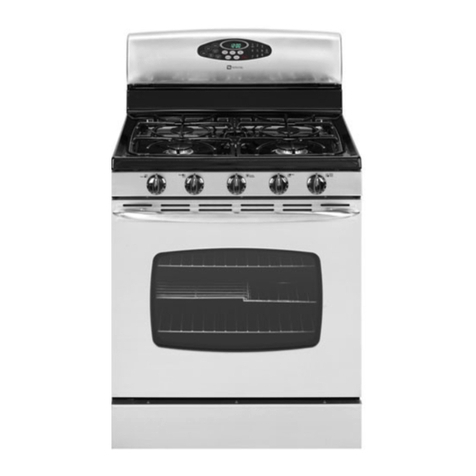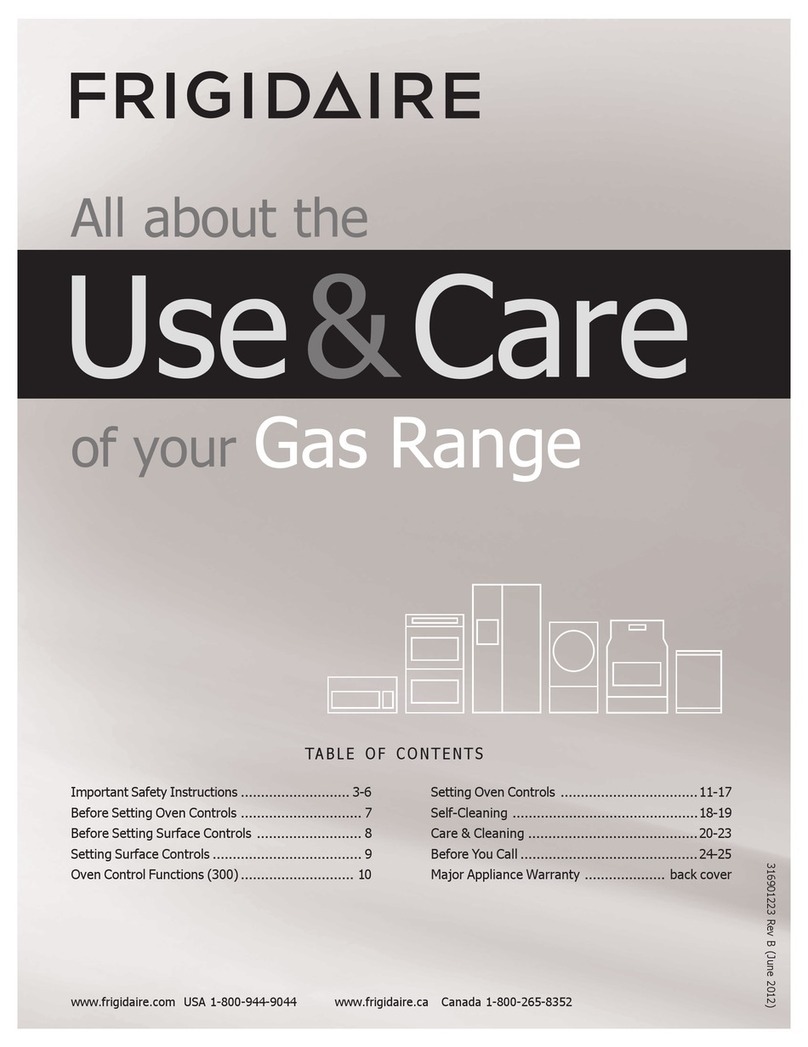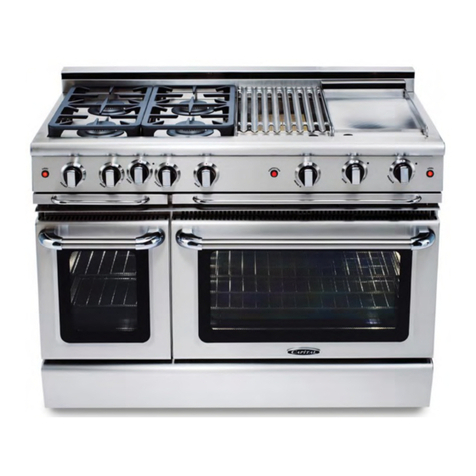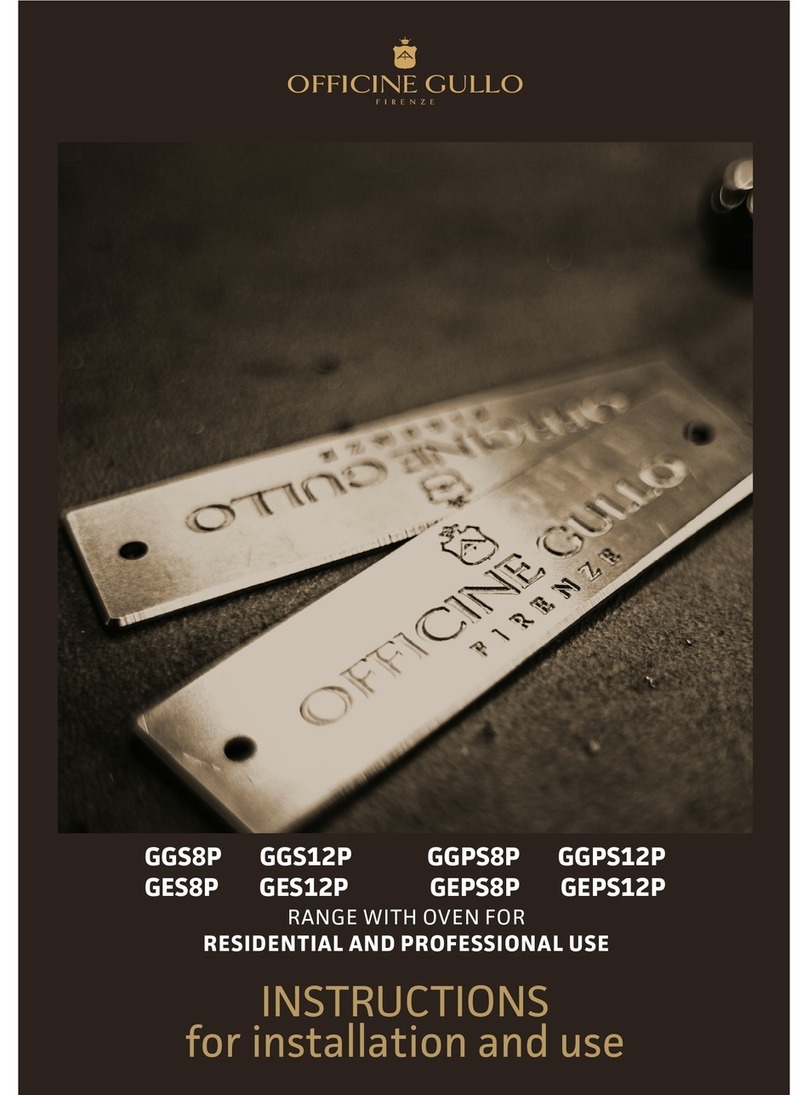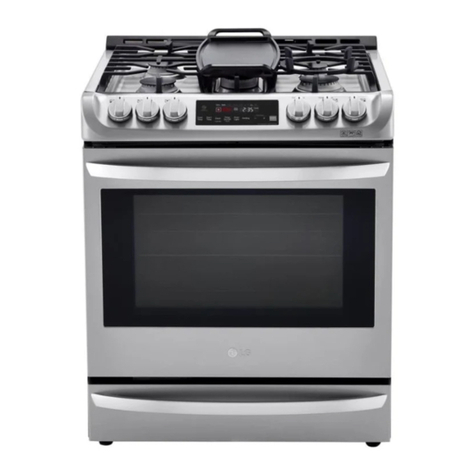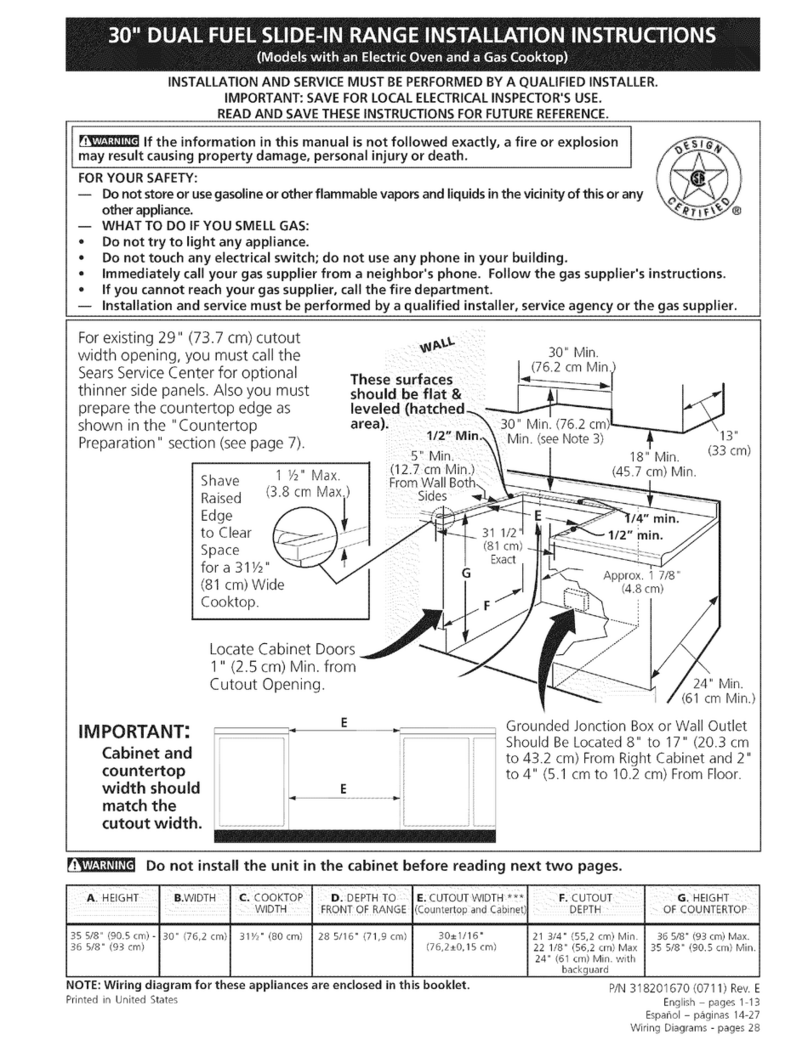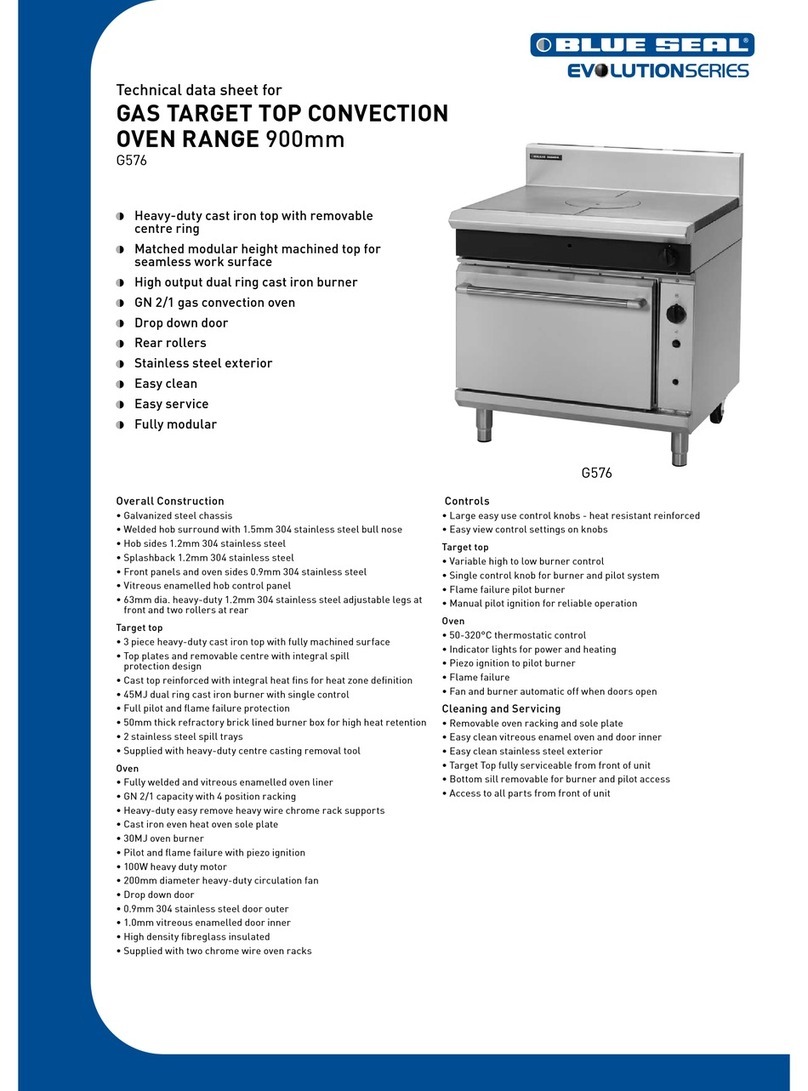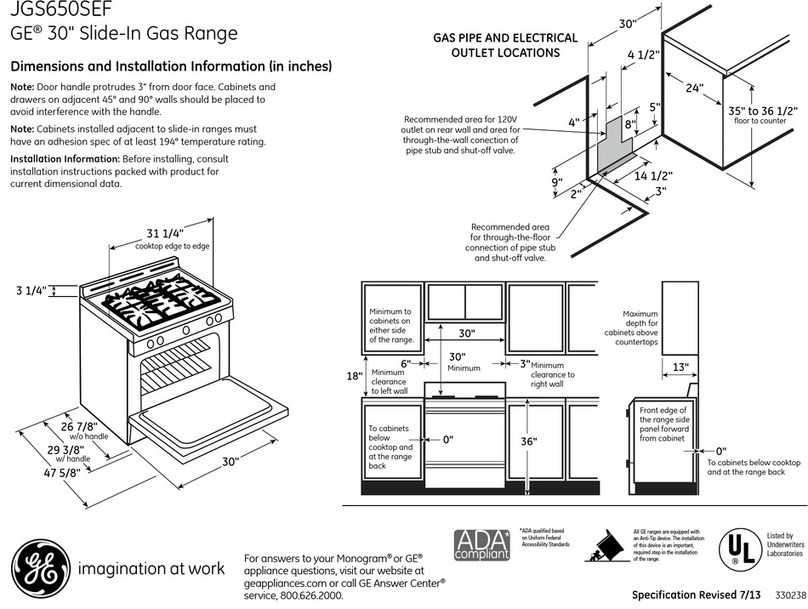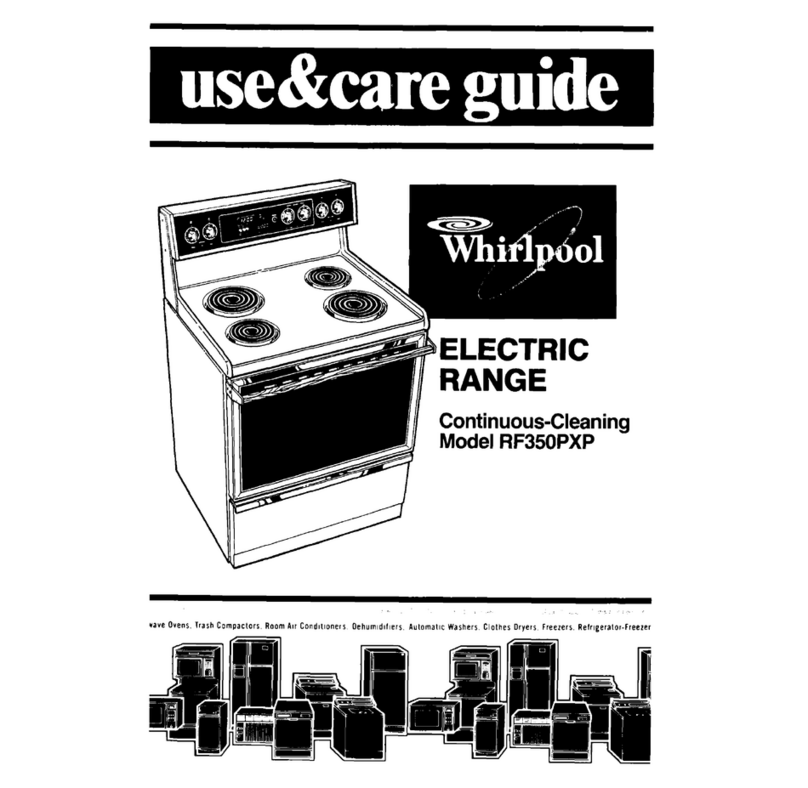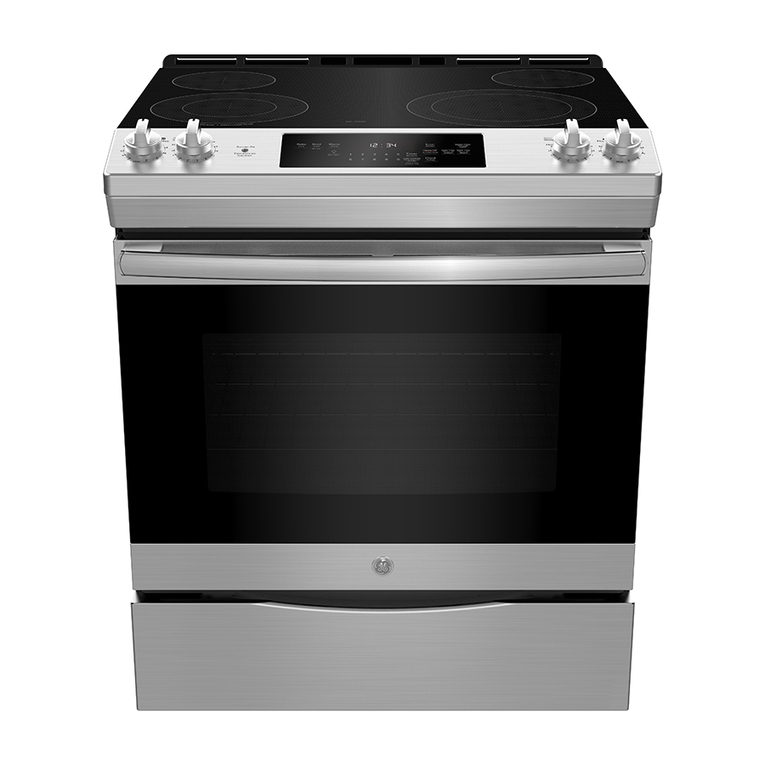
ed at the back of the machine. The structure of the
appliance is made of stainless steel, the burners
are made of Pyral and cast iron, and the oven one
is made of stainless steel. All models have adjust-
able feet.
Install a shut-off cock in the line between the appliance and the gas distribution
network. Install an omnipolar switch between the appliance and the electrical dis-
tribution network.
CONNECTION TO THE GAS DISTRIBUTION NETWORK
Before you install the appliance, make sure that the gas company has authorized
the installation, compare the data relevant of the appliance (data plate) with the
local supply
Remove the packaging from the appliance as well
as the protective plastic sheet, and, if necessary,
remove traces of glue with a suitable solvent. To
dispose of the packaging, follow local directives
(for more details refer to the chapter “ECOLOGY
AND THE ENVIRONMENT”. Prior to connecting
the unit to the gas network, check the data plate
to see if the unit has been set and tested for the
type of gas supplied. If the gas type indicated on the
data plate is not the same as that supplied, please
refer to the paragraph “CONVERSION AND ADAP-
TATION”. Connect the appliance to the gas distri-
bution network using metal pipes with a suitable
diameter; install a homologated shut-off cock be-
tween the appliance and the distribution network.
If flexible pipes are used, they must be made of
stainless steel according to the standards in force.
When installing the appliance, all the regulations in
force must be observed, such as:
- Installation and safety standards;
- Regional and/or local regulations, such as building
codes;
- Directives and regulations of the electricity board;
- Accident prevention regulations in force;
- Fire prevention regulations;
- Applicable I.E.C. regulations
We recommend installing the appliance in a
well-ventilated environment, or under an extrac-
tion hood to remove the fumes or vapors pro-
duced during the cooking cycle. All models have
an equipotential earth terminal fig.1in the bottom.
The appliances with an electric oven have a hole
for the cable fig.1. The appliance can be installed
alone or in line. Respect a minimum distance of
80mm between the appliance and any walls made
of flammable material, partitions, kitchen furniture
or nearby equipment. The contact surfaces must
be covered with non-combustible heat insulating
material. The appliance, and especially the power
lead, must not be installed anywhere near heat
sources and the temperature of the place in which
the appliance is installed must not rise above 50°C.
After installing the appliance check for any leaks in
the fittings. Use non-corrosive foam products, such
as leak detection sprays, to look for any leaks.
5
EN
